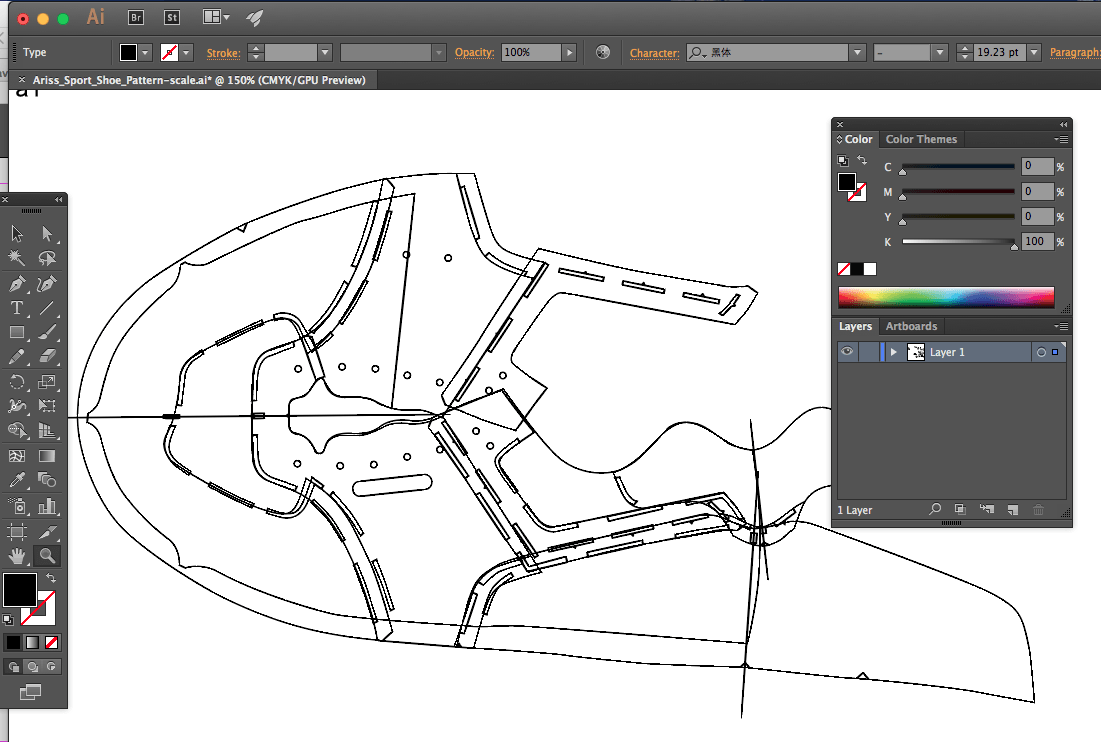Making a Sneaker Pattern

Once you have completed drawing your shoe design, you will need to make a flat pattern. The pattern will be used to cut and sew the materials for your initial sample. The pattern records the actual shape of the shoe. The pattern and the shoe last together determine the profile, fit, collar height, vamp length, tongue length, throat width and all the other dimensions of the shoe.
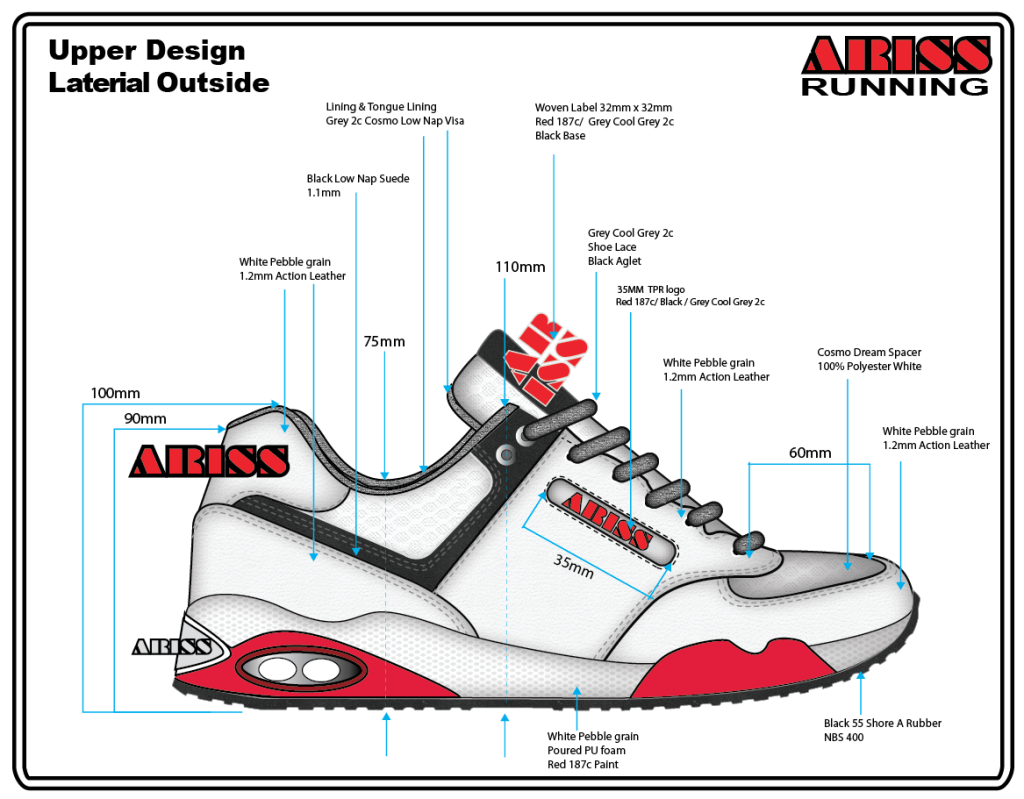
This classic jogger shoe pattern looks simple but it has many pattern parts. Shoemaking patterns can be very complicated.
Display Your Shoe Pattern
There are a few ways to display the shoe pattern.
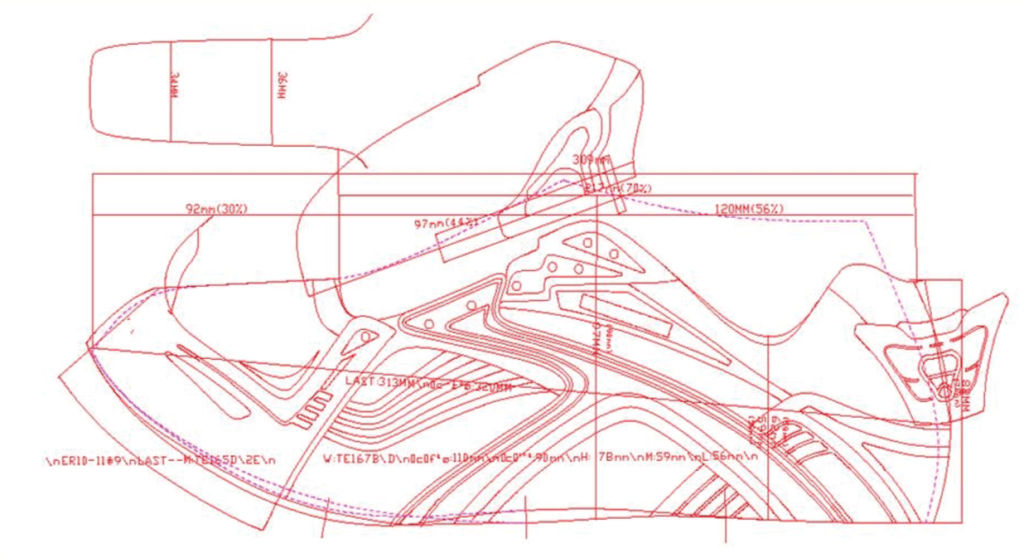
The complete shoe shell pattern, as shown above, may not show the material overlaps but is an easy way to communicate the design. Often, the factory will include the shell pattern with any new pull-over samples. This allows the designer to scan the pattern back into the computer and make corrections.
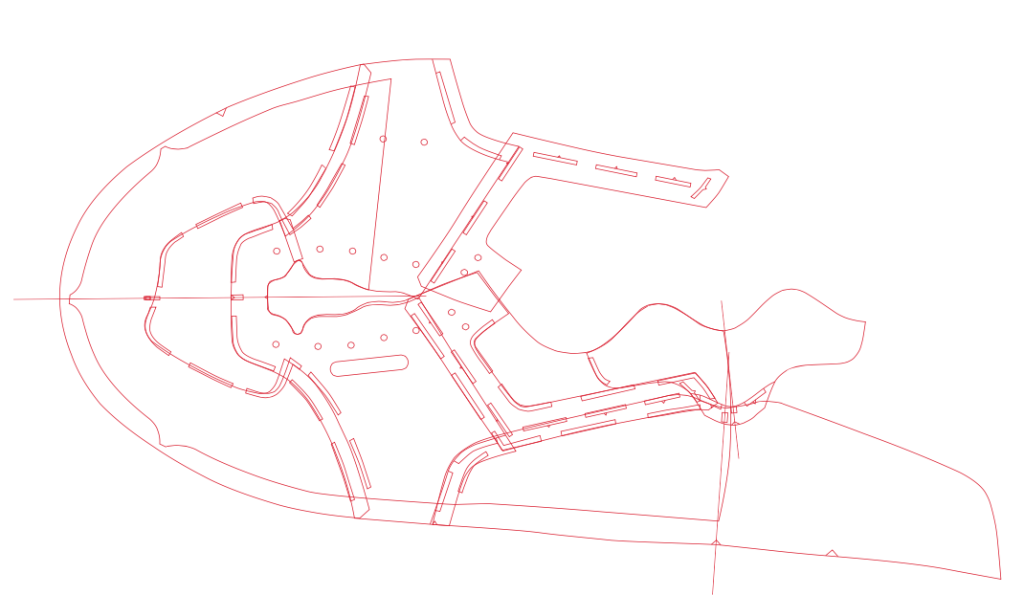
Another method (shown above) is to display all the pattern parts; including the overlap and the alignment marks. This drawing helps the pattern maker see how the parts fit together and where the overlaps occur.
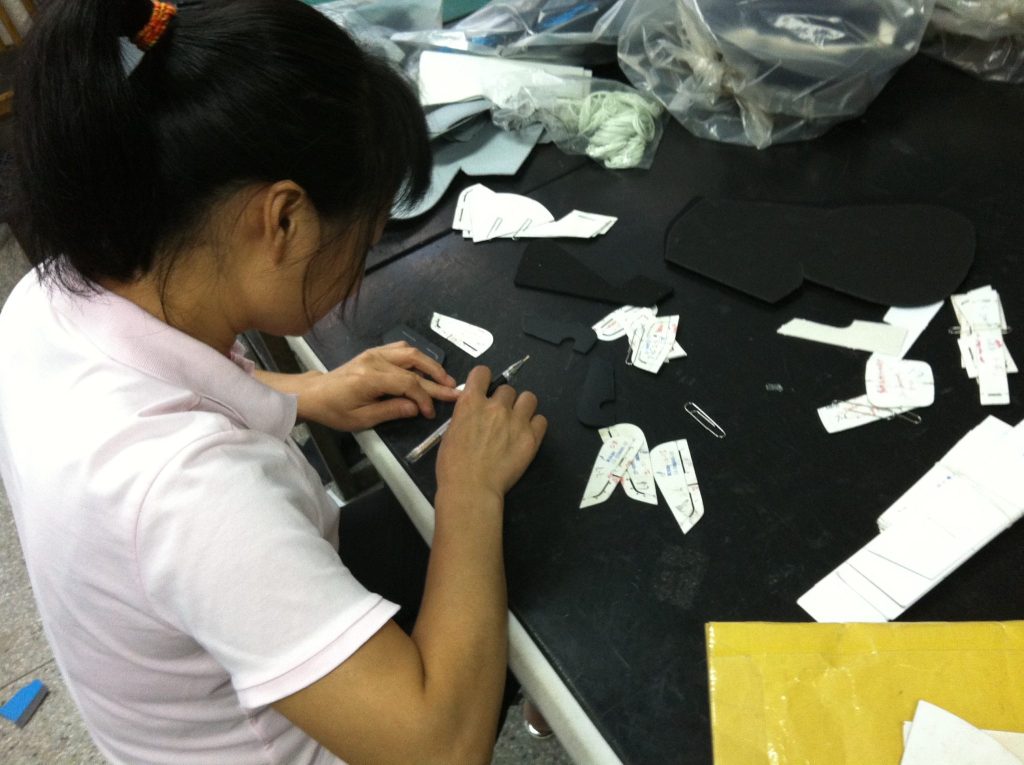
Here you can see the cut paper pattern parts. These are what the sample pattern cutter will use to make the first sample shoe. Many factories will use a machine to cut sample parts but cutting the paper by hand saves the time involved in computerizing the pattern.
-
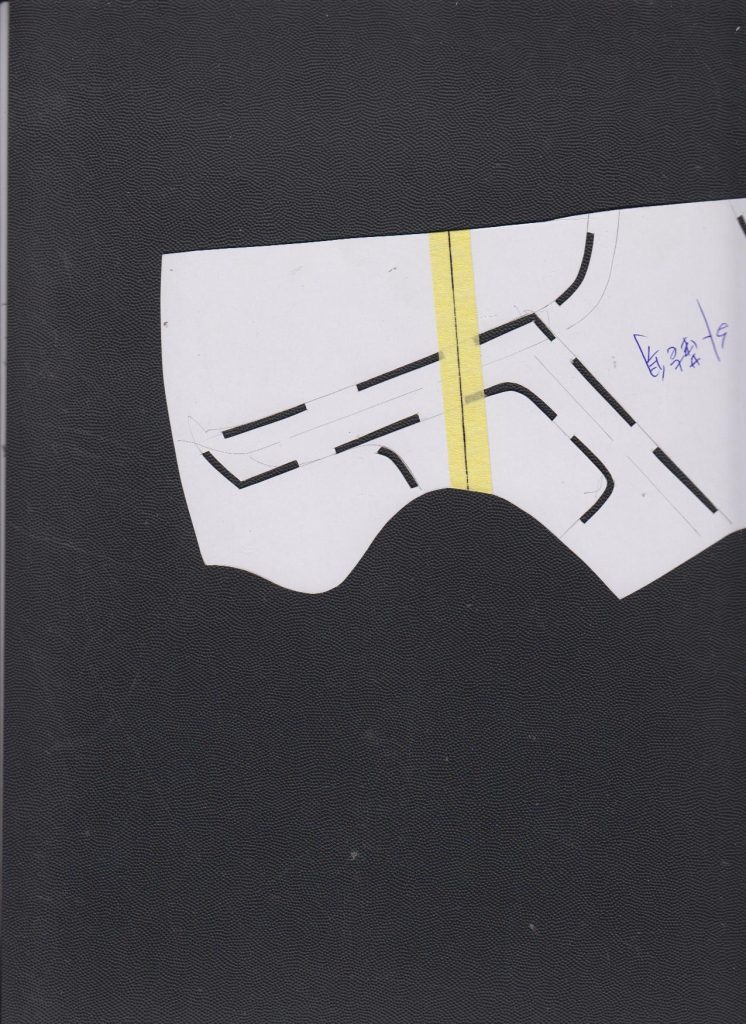
The vamp and lining pattern parts make up the base layer for assembly. -
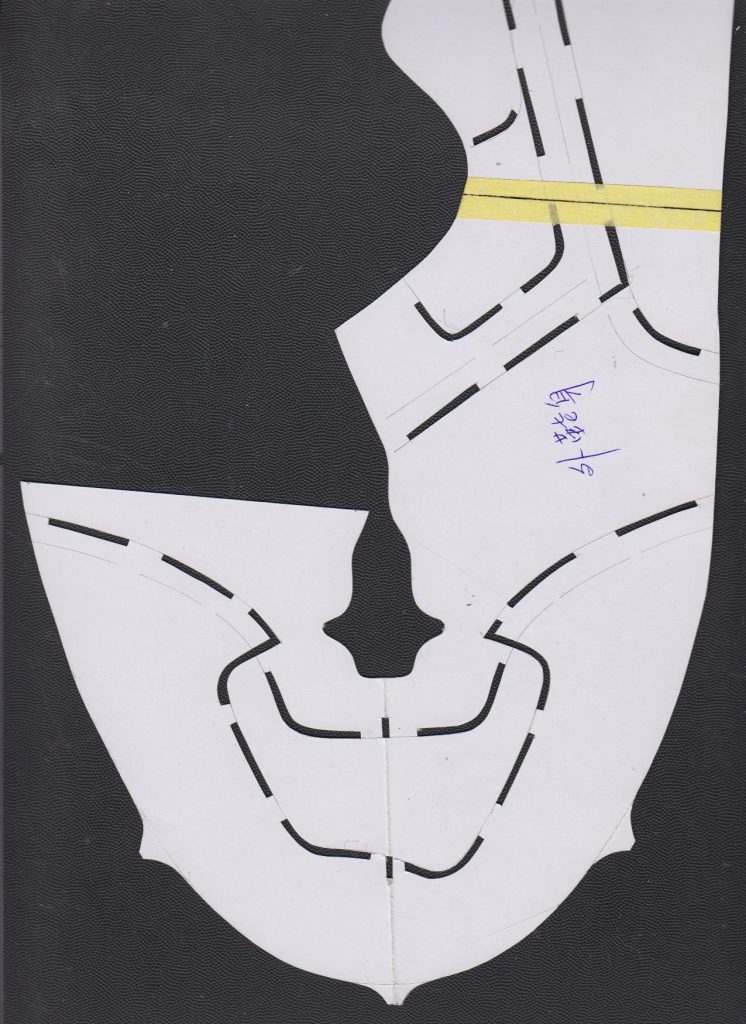
The vamp and lining pattern parts make up the base layer for assembly. -
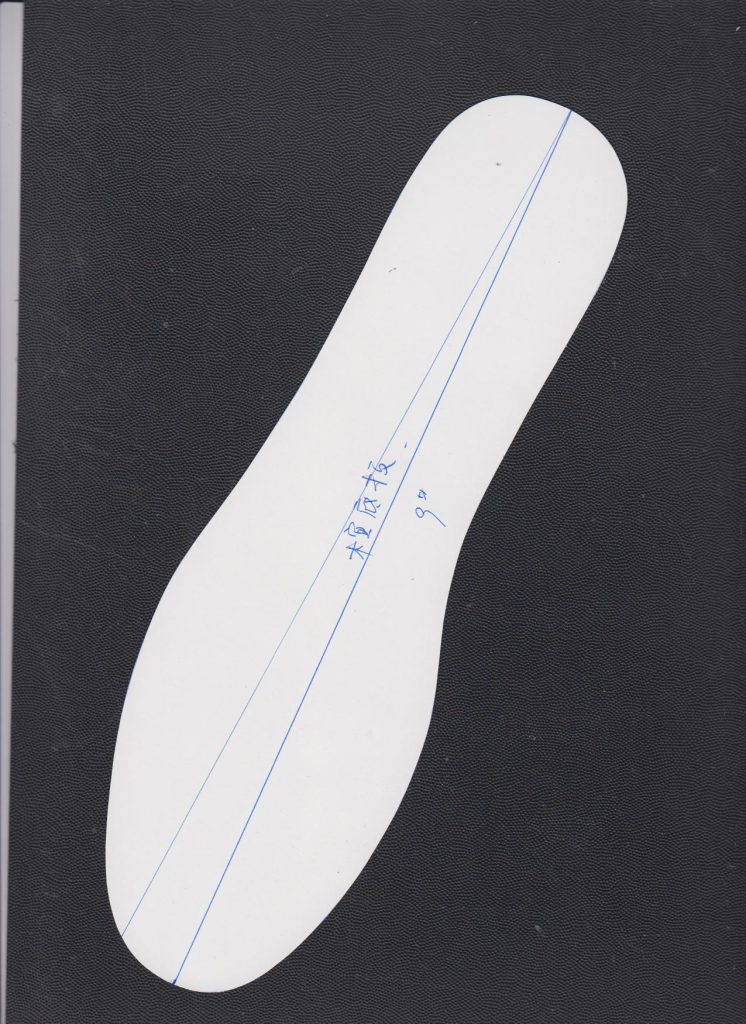
The insole pattern is the strobal sock, this is made from a tough non-stretch material. -
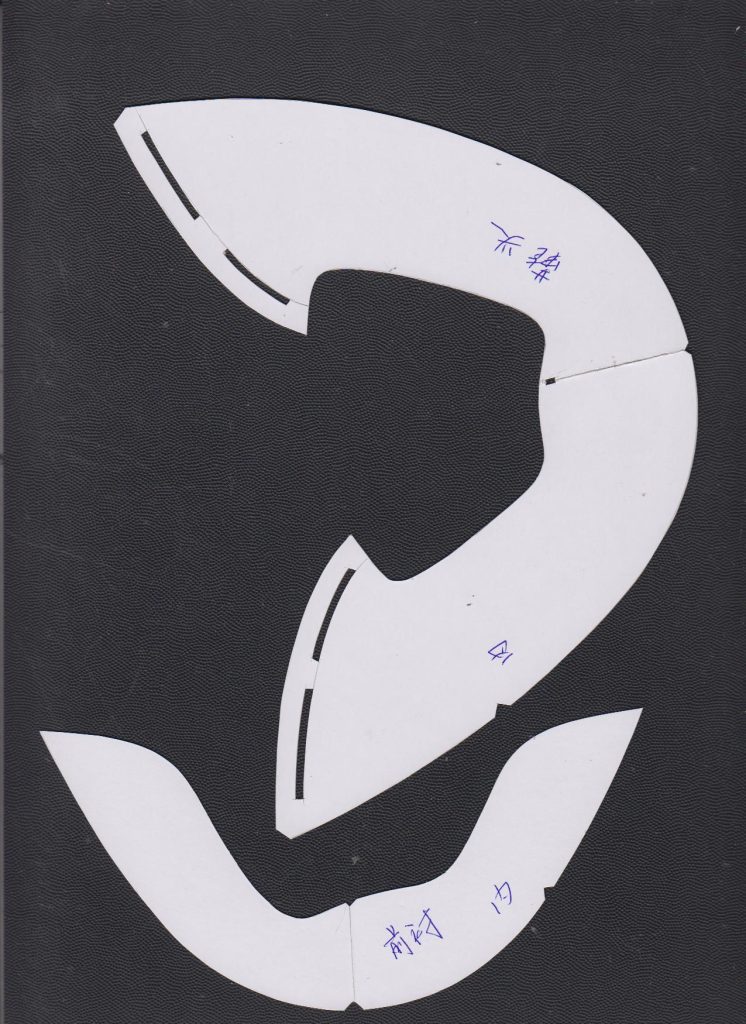
Sneaker patterns: The Toe piece will be leather. You can see it’s not symmetrical. The extra panel is called a toe burst panel. This prevents the big toe nail from wearing through the vamp mesh. The heel lining is the pattern for collar foam. -
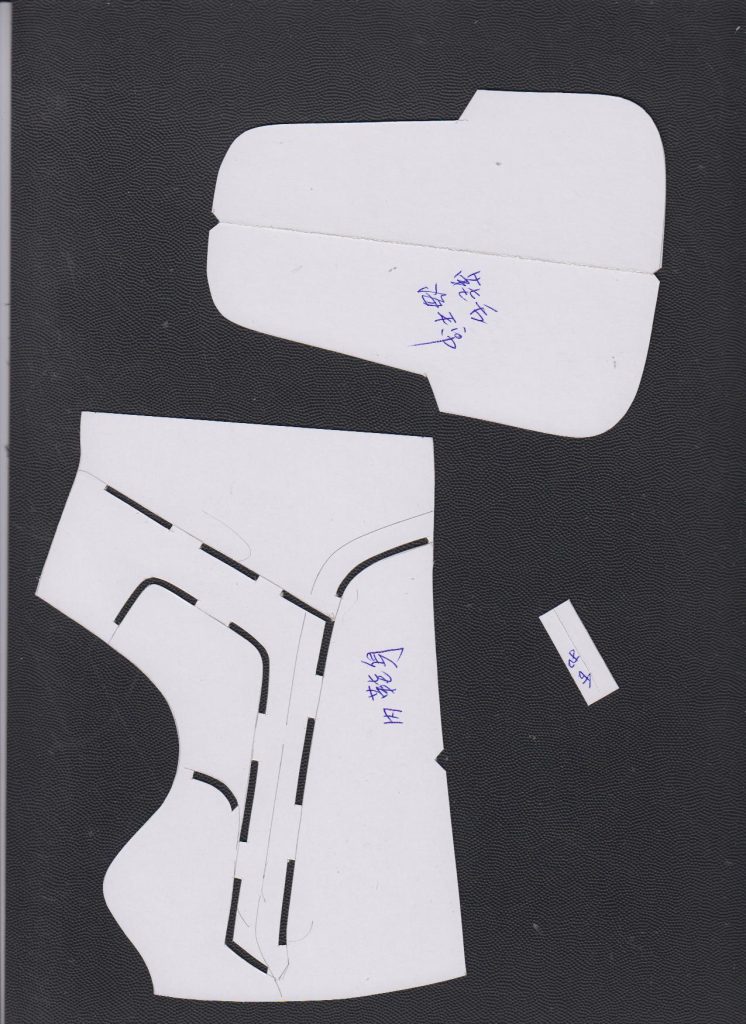
Running shoe pattern: The tongue foam pattern for 10mm Kff Foam. -
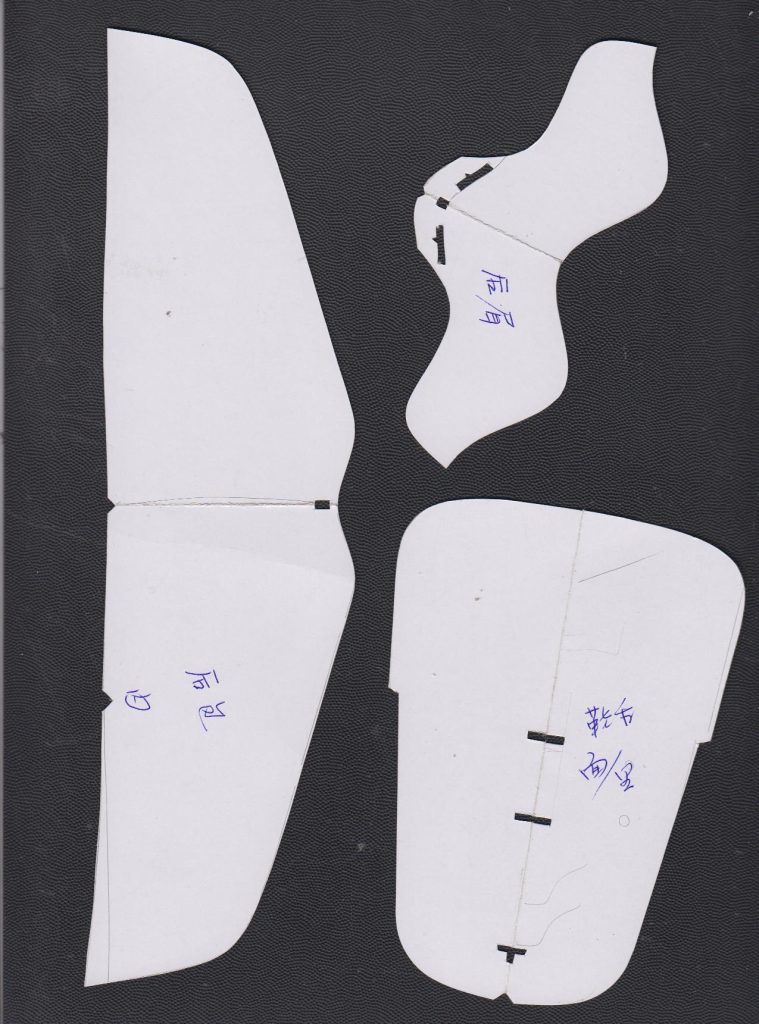
Shoe pattern: The heel counter is a small part. It will be made from a reinforcing material. The back stay is a leather panel, great for logos. -
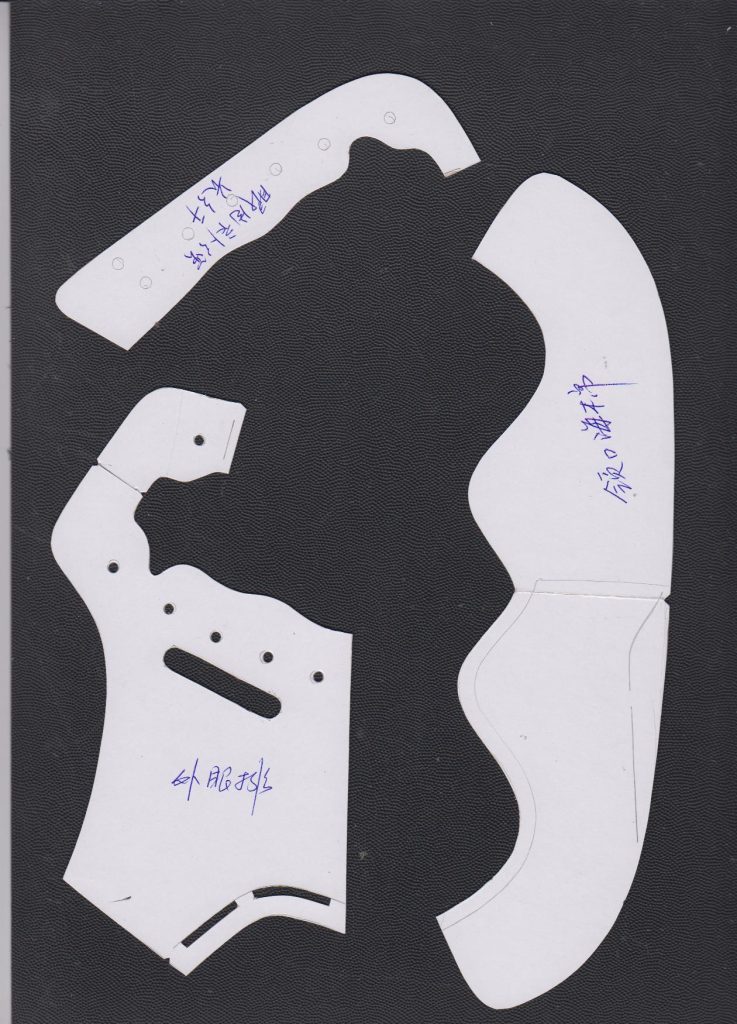
Sneaker patterns: The medial eyestay and lateral eyestay are leather parts. The break line is on the medial inside of the shoe. If this was one part it would wrap around onto itself and waste material. The break line could be in the middle, at the base of the tongue. The lateral side has a die cut for the logo. -
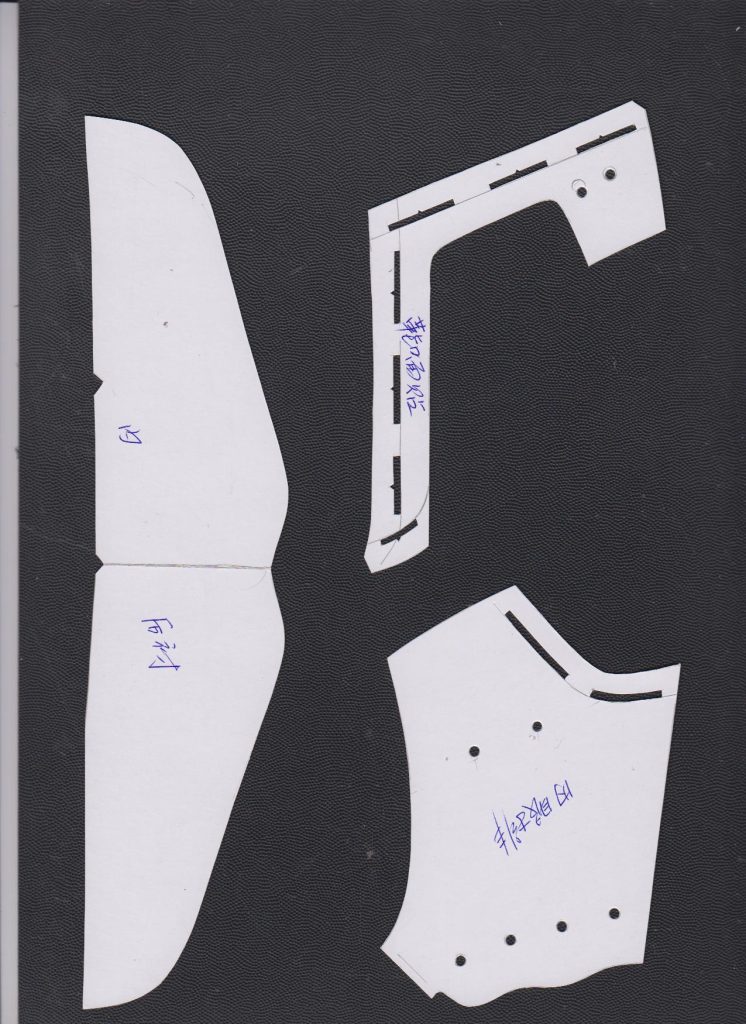
The eyestay underlay parts are the same pattern, mirrored.
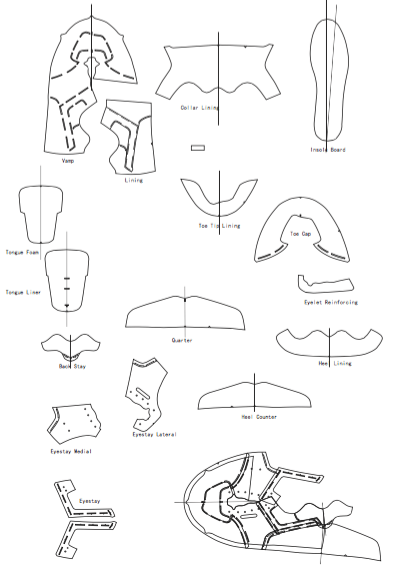
This pattern for the Ariss running shoe is available for download here.
The vamp and lining pattern parts make up the base layer for assembly
these will be mesh.
The tongue pattern is both the lining and face.
The face is made of mesh and the lining is made from Visa terry.
The tongue foam pattern for 10mm Kff foam.
The quarter panel is the made of leather.
The heel counter is a smaller part which will be made from a reinforcing material. The backstay is a leather panel, great for logos.
The medial eyestay and lateral eyestay are leather parts. The break line is on the medial inside of the shoe. If this were one part, it would wrap around onto itself and waste material. The break line can be in the middle at the base of the tongue. The lateral side has a die cut for the logo.
The eyestay underlay parts are the same pattern, mirrored.
The toe tip will be leather, you can see it’s not symmetrical. The extra panel is called a toe burst panel. This prevents the big toenail from wearing through the vamp mesh.
The heel lining is the pattern for collar foam.
The collar lining is made from Visa terry fabric.
The shoe has a perforated eyestay, to prevent “tear out” reinforcement material is added.
The insole pattern is the strobal sock, this is made from a tough non-stretch material.

